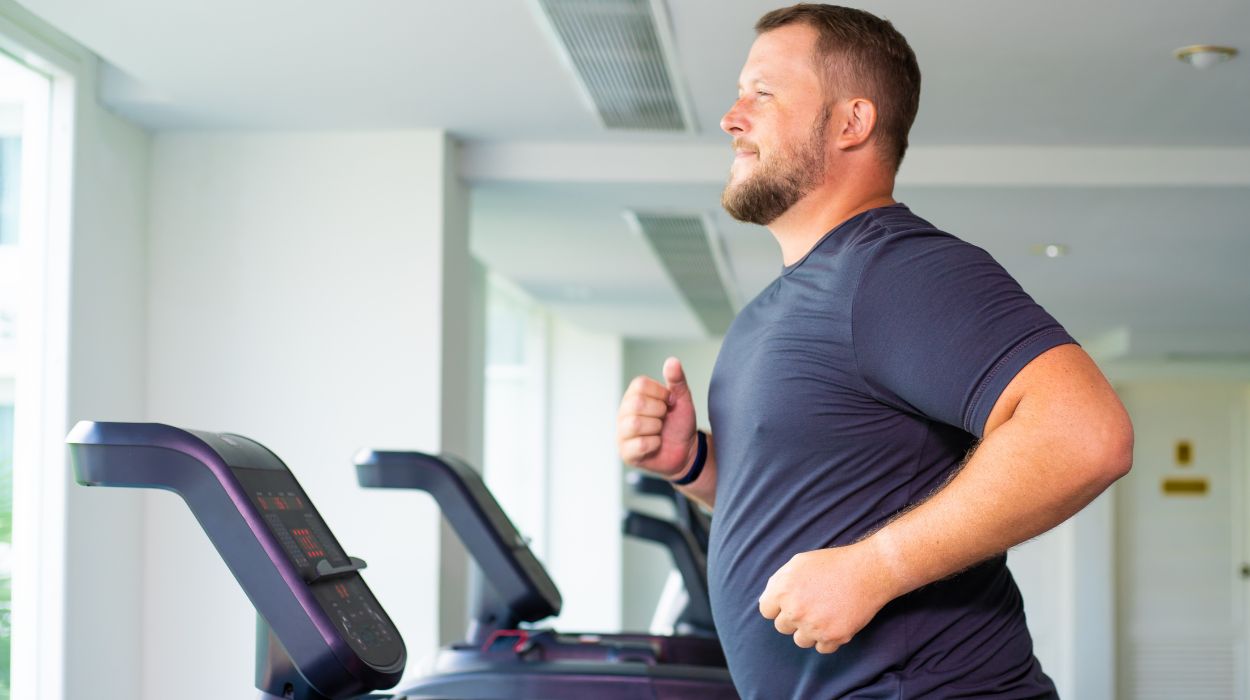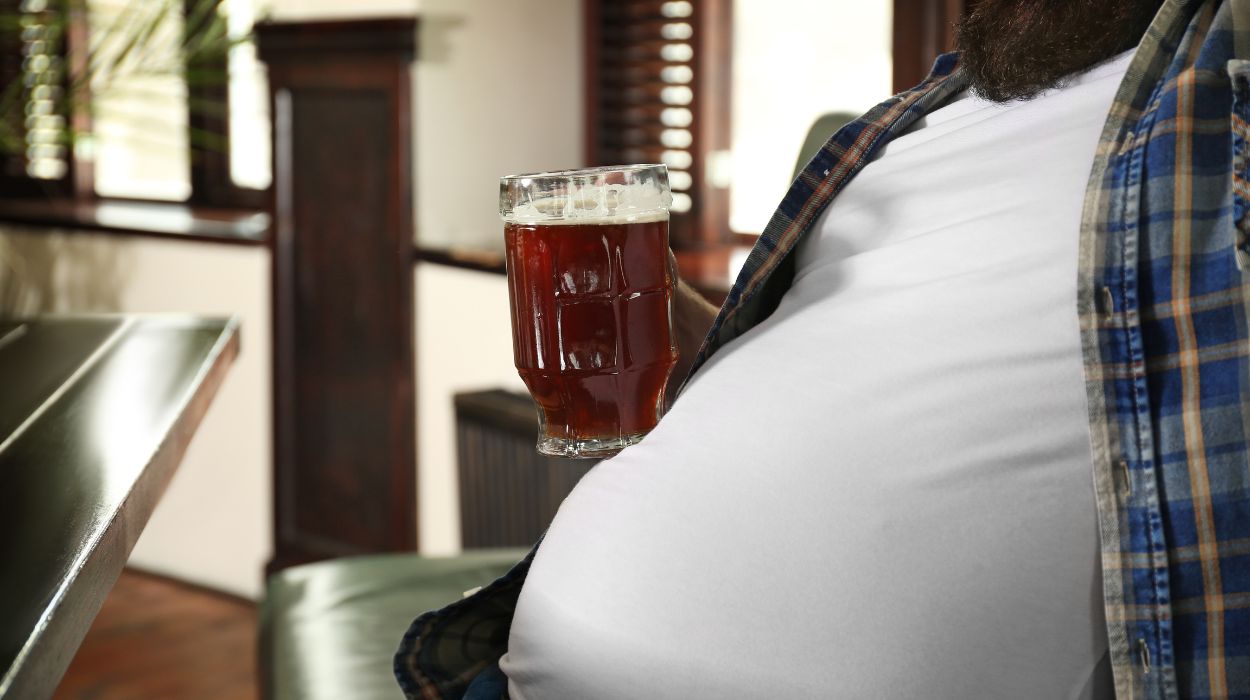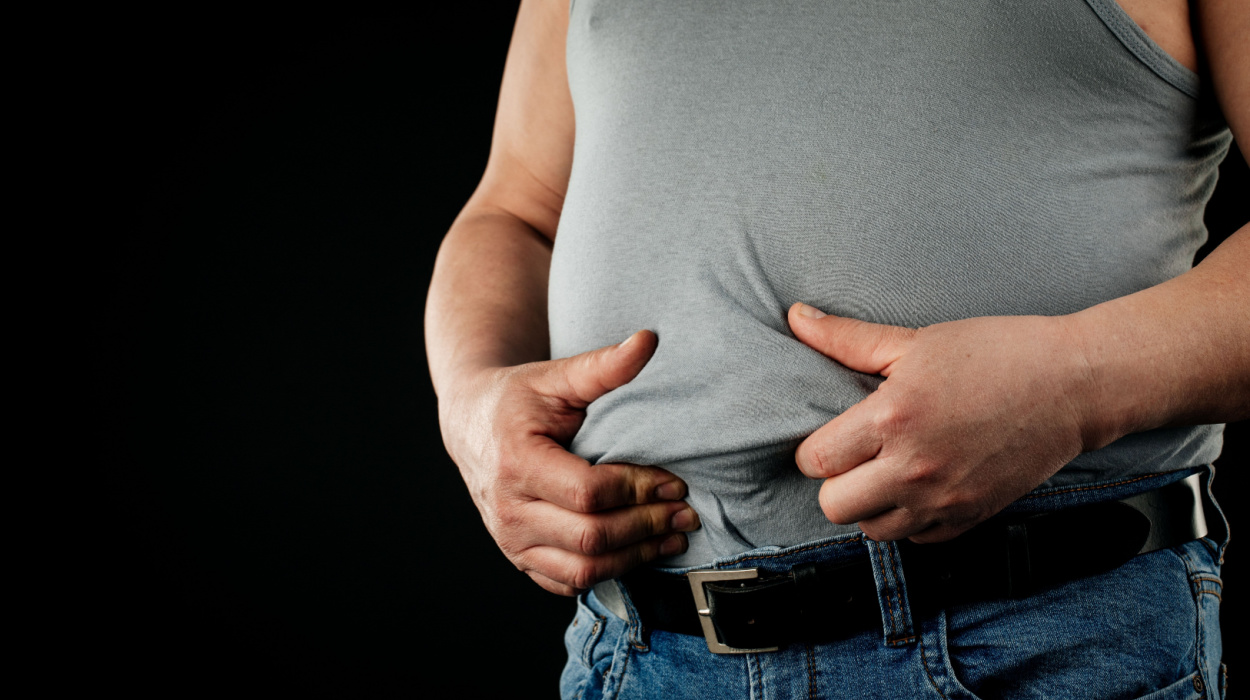Many people fear drinking beer because they often accumulate belly[1] fat from the excess calories found in beer. They tend to notice their waistline expanding while other body parts stay relatively thin.
Getting rid of belly fat can be challenging because it is specific to one body part. Though targeted fat loss is a challenge, it is not impossible. Continue reading this article to learn how to get rid of a beer belly so that you can reach your fitness and physique goals.
How To Get Rid Of Beer Belly Fast
Follow these tips below to get rid of beer belly fast:
- Do cardio.
- Stop drinking alcohol.
- Drink adequate water.
- Take supplements.
- Increase protein intake.
- Reduce sugar intake.
- Eat unprocessed carbs.
- Get enough sleep.
- Use probiotics.
- Take weight loss drugs.
How To Get Rid Of Beer Belly

Many people wonder how to lose belly fat, but as social beings, they are more specifically wondering how to get rid of a beer belly. Try considering these options when struggling with how to lose alcohol weight to decrease your waist circumference.
Do Cardio
Cardio is an example of how to lose alcohol weight that will help you burn fat. But how much cardio do you need? And which exercises will be most effective in helping you shed pounds?
Consider these topics when choosing the best cardio for weight loss:
- High-intensity interval training.
- Jogging.
- Incline treadmill.
- Cycling.
- Stair climber.
Other effective forms of cardio include jumping rope and running. But which is most effective?
A comparison of jumping rope vs. running shows that both can lead to increased caloric expenditure, but jumping rope burns slightly more calories than running. Cardio exercises provide various physical and mental benefits, and you can conveniently add them to your weight loss routine as they do not require much equipment.
Stop Drinking
Alcohol, which is high in calories and contributes to belly fat. It may be beneficial to consider decreasing alcoholic drinks and beer consumption to attain a healthy weight.
Unfortunately, eliminating alcohol from your diet is not as easy as it seems. Many people become reliant on drinking[2] and use alcohol to help them process challenging life situations or mental health crises. This is because alcohol produces pleasurable feelings, increasing the desire for more.
In the case of alcoholics, their bodies get used to having alcohol in their system. When they finally remove alcohol from their routine, their body struggles to maintain homeostasis,[3] causing them to enter into withdrawal.
So, how do you detox your body from alcohol? Some people can do it independently, but most will require medical supervision. A trained professional will keep you comfortable throughout the detox process and ensure you don’t relapse.
Drink Water
You can also drink water to reach your weight loss goals. Water is recommended because it can replace sugary soft drinks high in calories. It may also assist in weight loss[4] by increasing energy expenditure and helping to eliminate waste.
Research[5] shows adequate hydration can be achieved by drinking 6-8 cups of water daily. Even more, water is recommended to avoid dehydration when dealing with excessive heat, sweating, and exercise.
Take Supplements
Several supplements on the market are designed to aid with weight loss. They do this by enhancing metabolism and helping to curb hunger.
It’s essential to use supplements with trusted ingredients and read the reviews to ensure they are effective in their claims. Remember that supplements will not work without the proper diet and exercise routine.
Increase Protein Intake
Protein is extremely valuable for weight loss.[6] It provides energy, which helps to improve your athletic performance. You can increase weight loss and decrease your beer belly with more energy.
Consuming protein also builds muscle mass. This helps to define the abdominal muscles better and improve overall central obesity, which assists in improving that beer belly look.
Experts[7] recommend consuming 1.2 to 1.5 grams/kilogram of protein daily as a healthy adult to achieve optimal health and fitness.
Reduce Sugar Intake
Sugar is a good example of empty calories, adding calories to food without providing any nutritional value. It also makes you crave more sugary foods, which increases weight gain tendencies.[8]
Eat Fewer Unprocessed Carbs
Unprocessed carbs that are high in starch support weight gain. Try and replace unprocessed carbs[9] with complex carbs to reach your weight loss goals. You can get complex carbs from fresh fruits and vegetables; They are lower in simple sugars and calories.
People who wish to lose weight can also follow a very low-carb diet. Cutting unhealthy carbs to 50 grams a day[10] can allow you to shed pounds. Once you’ve attained your fitness goals, you may move on to a moderate-carb diet that allows for more carbs daily.
Get Enough Sleep
A lack of sleep can contribute to weight gain.[11] When assessing the hormones of people who sleep poorly, researchers have found increases in the hormone ghrelin, which increases hunger and decreases in leptin, which controls appetite. Research has also established that insufficient sleep can drive hormonal changes that make individuals make unhealthy food choices.
Use Probiotics
Probiotics are good bacteria that balance bad bacteria in the gut. They help to support digestion, and research[12] also suggests that certain probiotics may reduce the calories a person absorbs from food.
Take Weight Loss Drugs
If the above lifestyle modifications do not work for you, talk with your physician about adding a prescription medication to help facilitate your weight loss.
Weight loss drugs on the market may help with fat loss. Ozempic is among the most popular weight loss drugs as it utilizes many complex mechanisms[13] to slow stomach emptying and decrease appetite.
If you drink beer, you may wonder, can I drink alcohol while taking Ozempic? Yes, you can. There is no medical warning on the label that prohibits drinking alcohol on Ozempic. However, alcohol consumption can interfere with insulin resistance, making it difficult for you to reach your weight loss goals.
What Causes A Beer Belly?

There are two reasons why beer leads to weight gain. For one, it is high in calories.[14] Regular beer with 5% alcohol by volume has about 140 calories, while light beer with 4% alcohol by volume has around 100 calories.
The high-calorie count leads to weight gain throughout the body. But why does beer drinking target the stomach?
Researchers have found that the liver burns alcohol instead of fat.[15] It recognizes alcohol as a toxin and focuses on eliminating it from the system.
The ethanol in alcohol impairs fat oxidation and stimulates lipogenesis; in other words, it remodels the liver from a fat-burning organ to a fat-storing organ. One study[16] showed that fat in the liver has a direct correlation to belly fat.
Beer contributes to abdominal fat more than other alcoholic beverages because it contains more calories.[17] While some alcoholic drinks are high in calories, most are 100 calories or less. They have lower calorie content than beer.
How Long Does It Take To Get Rid Of A Beer Belly
So, can you get rid of a beer belly? The amount of time it takes to get rid of beer bellies varies. It depends on your weight loss efforts. However, many people will start seeing results around the 12-week mark.
A 2014 study found that obese women who followed a walking exercise program witnessed significant weight loss[18] after 12 weeks. Another recent study showed that 12 weeks of high-intensity interval training reduced waist circumference[19] by 11.4 cm in men and 17.8 in women on average.
How to Get Rid of a Beer Belly In Two Weeks
Most people want to know how to get rid of a beer belly fast. It is possible to get rid of a beer belly in two weeks. But it depends on how large your beer belly is.
Realistically, most people will lose one to two pounds[20] per week during the first six months of weight loss, depending on caloric intake and physical activity. Subsequent results will vary depending on the amount of previous weight loss.
Can Exercise Eliminate Your Beer Belly?
If you are wondering how to eliminate beer belly, exercise is an effective solution. However, some exercises will help you lose weight sooner than others.
Studies show that high-intensity interval training is especially effective at reducing belly fat[21] while walking, and it also helps target abdominal obesity.[18] Core exercises can also help you gain definition in your belly, but will not be the sole item leading to weight loss.[22] You must do fat-burning exercises to lose weight and reduce visceral fat.
Can You Get Rid Of Beer Belly?
In most cases, you will be able to get rid of your beer belly completely with lifestyle modifications. With an onset of weight in your abdominal region, you may have a diastasis recti[23] that needs to be addressed.
This condition typically occurs in pregnant women with the stretching of linea alba from the increased weight and size of a baby. It results in a belly that may not go away for months or even years after pregnancy. It can also occur in people with beer bellies and those who overwork their abdominal muscles.
Fortunately, there are ways to deal with the condition, including exercise, physical therapy, and surgery.
Conclusion
Though it is tasty in flavor, beer is high in calories. It causes weight gain that tends to target the mid-section, leading to abdominal obesity. Many people who drink beer will develop a beer belly.
A beer belly can be reduced with the right combination of diet and exercise changes. Eat healthy foods that promote fat burn, and combine a nutritious diet with walking and HIIT for optimal results.
Frequently Asked Questions
Research shows that you must consume 3,500 calories to gain a pound.[24] Two beers are around 300 calories. If you drink two beers plus the food you are consuming for around 11 nights, you will gain weight.
Six beers are approximately 900 calories. If you drink beer plus the food you consume for many days, you will likely gain weight.
You may lose weight if you stop drinking. But to reach your weight loss goals, you must also exercise and follow a healthy diet.
People who drink tend to have an “apple-shaped“[25] body with higher body fat levels around the middle.
 Evidence Based
Evidence Based
